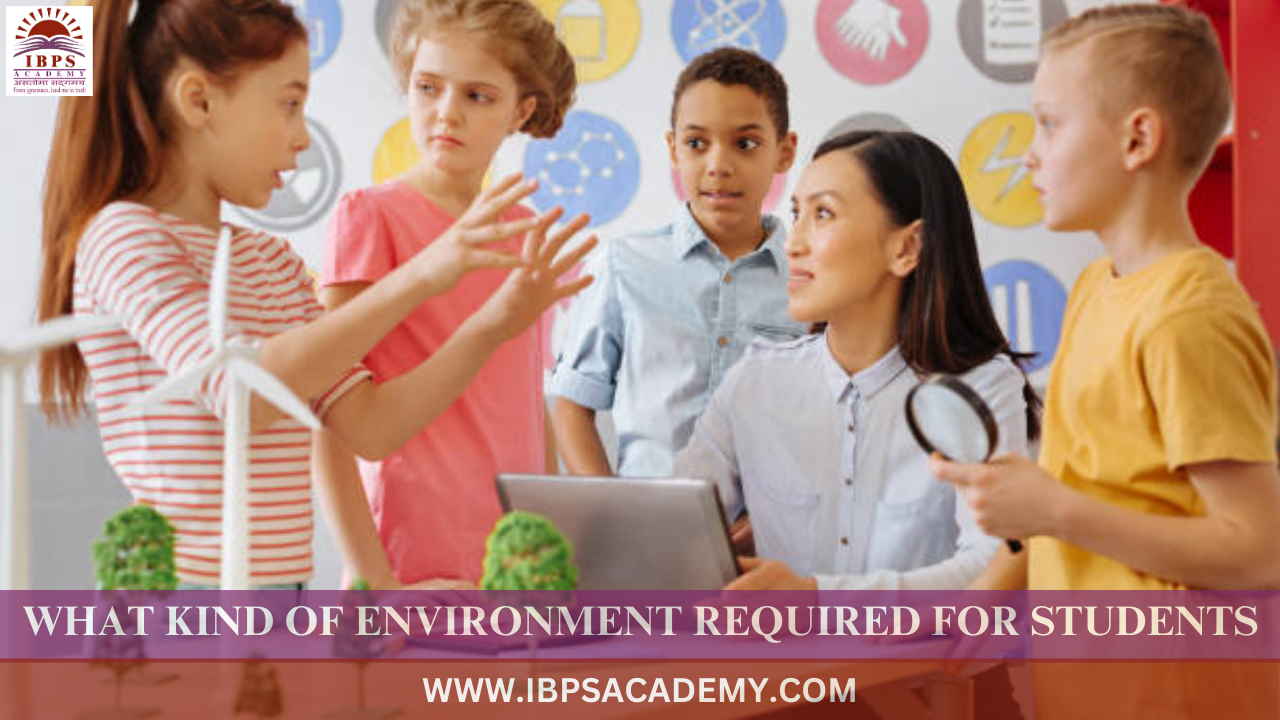WHAT KIND OF ENVIRONMENT REQUIRED FOR STUDENTS
Published on: Dec 20, 2024
WHAT KIND OF ENVIRONMENT REQUIRED FOR STUDENTS ??
The environment required for students to thrive in their learning depends on several factors that promote focus, well-being, and academic success. These factors can be grouped into physical, emotional, and academic categories:
1. Physical Environment:
- Quiet and Comfortable Space: A space free from distractions where students can focus on their studies is essential. This could include a clean desk, comfortable seating, and good lighting.
- Good Lighting and Ventilation: Proper lighting helps reduce eye strain, and adequate ventilation prevents feelings of fatigue. Natural light is ideal, but bright artificial lighting is also acceptable.
- Technology and Resources: Having access to a computer, internet, textbooks, and other materials is crucial, especially for online learning or research.
- Safety: The environment should be safe physically and emotionally, free from hazards, bullying, or violence.
- Organization: A clutter-free, organized space helps students maintain focus and reduce stress.
2. Emotional and Social Environment:
- Supportive Relationships: Teachers, family, and peers who encourage and support the student’s growth are key. Positive reinforcement and constructive feedback help build confidence and motivation.
- Mental Well-being: A calm and supportive emotional climate is important. Students need to feel valued, understood, and not overwhelmed by pressure.
- Respect and Inclusivity: An environment where students feel respected regardless of background, identity, or differences encourages collaboration and mental peace.
- Motivation and Inspiration: An inspiring environment that fosters curiosity, creativity, and intrinsic motivation can help students be more engaged and committed to learning.
3. Academic Environment:
- Clear Expectations and Structure: Clearly defined goals, deadlines, and expectations help students focus their efforts and manage their time effectively.
- Engagement and Interaction: An environment that encourages active participation, group discussions, hands-on activities, or practical applications of knowledge leads to deeper learning.
- Access to Support: Access to tutors, counselors, or academic resources (libraries, study groups) helps students overcome challenges.
- Autonomy and Responsibility: Allowing students to take ownership of their learning fosters independence and responsibility, which is essential for their academic growth.
4. Learning Environment:
- Interactive Tools and Learning Platforms: The use of tools like digital platforms, educational apps, and learning management systems can make learning more engaging and accessible.
- Flexibility and Adaptability: An environment where teaching methods and materials can be adjusted to the needs of different students, such as offering a variety of learning styles (visual, auditory, hands-on), is essential for catering to diverse learners.
Conclusion:
An effective student environment is one that promotes focus, comfort, support, and engagement while addressing both the physical and emotional needs of students. This holistic approach enables students to not only excel academically but also develop resilience, curiosity, and social skills essential for their future.


